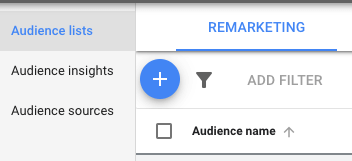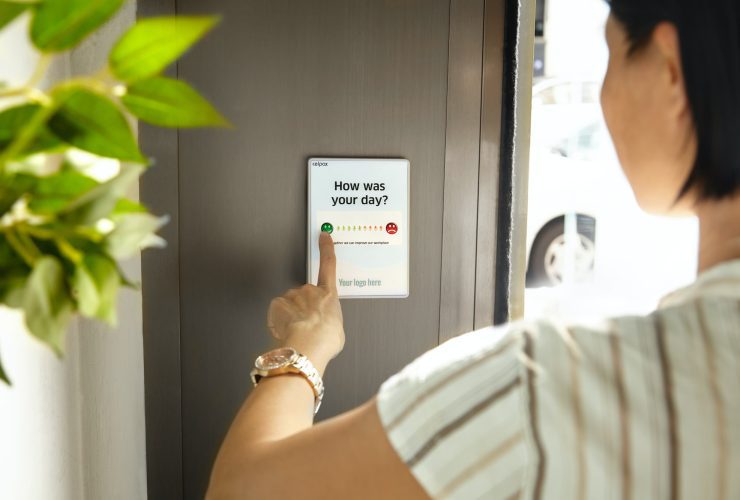How to Use Remarketing with Display Ads on Google
Not every patient will convert the very first time they click on your ad. That’s why you need to make the most of every opportunity to connect and engage with your website visitors. In this week’s episode, we’ll teach you how to use remarketing and display ads to re-engage with prospective patients until they convert.
Episode Transcript
What’s up everybody, and welcome to another episode of the Medical Marketing Podcast from Messenger – the show where we give you actionable tips and advice to help improve your practice marketing, grow your revenue, and take patient experience to the next level. I’m your host, Crawford Ifland, and today we’re going to be discussing how to use remarketing and display ads on Google to build a relationship with prospective patients until they convert.
What is Remarketing?
Have you ever viewed a product online, only to have it follow you around everywhere you go on the Internet? That’s remarketing at work.
At its core, remarketing is the process of showing ads to people whom you know you already have somewhat of a relationship with. This could either be patients who have clicked on an ad but didn’t convert, or perhaps a patient who has visited your website before.
Regardless of how they have interacted with you in the past, you know that they’ve interacted in some form – so you can keep displaying your marketing messages to them again until they take the final step.
Here’s how it works:
When a patient clicks on your ad on Google, a small bit of code (called a “cookie”) is placed on their computer. This cookie serves as an identifier and allows you to “retarget” these patients with additional ads.
This is why that product you viewed on Amazon follow you everywhere – Amazon knows that you looked at that product but didn’t buy it, and they’re betting that with repeated exposure, you’ll finally click “Buy Now.”
And the crazy thing is that it works.Research suggests that it takes an average of seven touch points with a brand before consumers feel comfortable enough taking the next step.
For Amazon, this means that it may take repeated exposure to a product before you become convinced enough to purchase.
For a medical practice, it may take several touches to make a patient familiar enough with a practice to take the next step – whether that be calling your practice, clicking through your website to learn more about your services, or scheduling an appointment.
So that’s remarketing in a nutshell. But how can the savvy medical practice utilize remarketing to get more patients? That’s what we’ll explore next.
How to Use Remarketing with Display Ads on Google
The most common way to get started with remarketing is to use Display Ads on Google.
Anyone can set up a display campaign, but you don’t get detailed targeting turned on by default. To set up a display campaign for remarketing purposes, you’ll need to create an audience.
To create a remarketing audience, you’ll need to navigate to the Audience Manager tab in Google Ads. Some audience lists are dynamically created by Google Ads. These include “All Visitors” and “All Converters,” and are pretty useful for most purposes.
However, if you don’t have a list yet (or if you want to customize who you remarket to), you can create a new list in the Audience Manager:

Assuming you’ve already set up conversion tracking in Google Ads, you’re good to go. Each time someone clicks on one of your ads, they will have a cookie automatically placed on their computer, and they’ll be added to the correct audience based on their behavior.
A note about audience sizes: in order to use a particular audience for remarketing purposes, the list has to have at least 100 members in the past 30 days – so if you’re not driving enough traffic to your website from your search campaigns, remarketing isn’t going to help you all that much.
There’s also a way to implement remarketing audiences for search campaigns, but it tends to be more expensive and have higher audience minimums, so we recommend that most practices utilize search ads to get the first click and then use display campaigns for remarketing.
How to Create a Remarketing Display Campaign
Now that you’ve gotten yours audience set up, it’s time to create your display campaign.
There are two types of display ads: traditional display ads and responsive display ads.
Traditional display ads (sometimes called “banner ads”) are exactly what they sound like: you upload your own creatives in specific sizes that Google dictates.
As Google has “inventory” available across the web, they’ll place your ads in that space – but the catch is that you have to have a creative uploaded that fits in that particular size. Google outlines the most common sizes that will cover most inventory, which we’ll link to in the show notes.
If you want more creative control over your ad creatives, traditional display ads are the way to go.
If you’re optimizing for reach, however, there’s another type of ads that can help you maximize exposure: Responsive Display Ads.
The benefit of Responsive Display Ads is that they can adapt to different sizes, so they’ll be eligible to display in many more places than traditional display ads are.
With RDAs, you can upload several photos and two logos, plus headlines, descriptions, and a call to action.
Again, there are recommended image sizes available, which we’ll have a link to in the show notes.
But there’s another benefit beyond automatic sizing: Google can dynamically generate the optimal combination of ad elements to achieve the greatest probability of an interaction. Based on how the user has interacted with ads in the past, displaying headlines, descriptions, and photos that are more likely to result in a click or a conversion.
For this reason, we recommend the use of Responsive Display Ads for remarketing.
They may not be as pretty or give you as much creative control over your ads, but they can deliver much stronger results.
In our own studies, implementing Responsive Display Ads can give you 6X more impressions and clicks , which can have huge results on your conversions. If you’ve listened to our episode on budgets in Google Ads, you’ll remember that if you can improve metrics at any part of your marketing funnel, it will have a profound impact on the results of your funnel overall.
So if you can double the number of clicks, your funnel becomes that much more effective – without increasing ad spend at all.
After all, if your ads are eligible to display much more, you should be getting much better results from your advertising. Cast the net wide and watch those patients start rolling in.
But to make your remarketing campaigns more effective, you don’t want to cast the net too wide – you have to find a balance between reach and specific targeting. That’s where targeting tactics come in.
Targeting Tactics: What You Should Know
There are many, many ways that you can target prospects in Google Ads.
We’ve already explored using a remarketing audience for targeting, but what if you want to advertise a product or service that may only be applicable to a certain subset of patients.
Let’s say you want to advertise cataract surgery – you wouldn’t want to display those ads to people who are under the age of 50, so you need to get more specific.
That’s where other types of targeting come in.
Google lets you target audiences in a variety of ways, including by age ranges, income ranges, gender, parental status, geographic location, and other parameters, like “In-Market” audiences that identify what products or services people might be looking to purchase.
You can also get more creative with targeting by going beyond what Google gives you. For example, you can create a “Custom Intent” audience that will target people who have searched for certain keywords on Google, visited certain sites, or both.
If you need to get more specific with your advertising at all, it’s a great idea to use a combination of targeting tactics to increase your chances of getting that conversion. When it comes to choosing targeting parameters, you’re not just limited to one!
Remarketing Budget Considerations
We briefly mentioned budget earlier, but it’s worth exploring a bit more in depth – how much should you spend on your remarketing campaigns?
This is a great question, and every advertiser’s needs, goals, and budget will vary. In general, however, we recommend for our clients to get the first click with a search campaign. While these clicks tend to be more expensive than display campaigns, they tend to attract more targeted traffic, because you know what people are searching for.
Once they’ve clicked on an ad and are added to a list, you can supplement your results with the cheaper clicks that remarketing display campaigns provide. A click from a search campaign advertising LASIK might cost $12, but a click on a remarketing display campaign going to that same patient might only cost $0.50.
When you combine these cheaper clicks with the more specific audiences we outlined earlier, your budget doesn’t need to be astronomical to see good results. For most private practices, depending on their desired reach and geographic targeting, we suggest remarketing display campaign budgets of $10/day or less.
Remarketing doesn’t have to break the bank. Even with a modest ad spend, you can capture more patients and grow your revenue.
Recap
So, let’s recap what we’ve learned about remarketing campaigns:
- Remarketing is the process of showing your ads to people who have interacted with your business in some form or fashion
- The most common way to do remarketing is to create display campaigns in Google ads and use specific targeting to show these ads to the right people: namely, people who have had some interaction with your business before.
- Google provides a variety of pre-set targeting audiences and demographics, but don’t stop there. You can get utilize their In-Market Audiences – or get even more specific by creating a Custom Intent Audience of your own – to further segment potential customers and get better results.
- And finally, when it comes to budget, you don’t need to go overboard. $10/day (or less) can usually get you good results from your remarketing campaigns, as long as your targeting is right.
Next Week…
That’s all for today’s episode of the Medical Marketing Podcast.
Next week, we’ll explore best practices about SEO and how healthcare professionals can use SEO to get more patients with special guest and world-renowned SEO expert Matthew Woodward. Matthew has over 20 years of experience in the SEO world and he has a bunch of great insights to share, so be sure to tune in.
As always, we’ll have a link to the show notes in the description, and don’t forget to browse our website at www.messenger.md – we’ve got tons of great resources on how to improve your practice marketing, grow revenue, and take your patient experience to the next level.
For Messenger, I’m Crawford Ifland – see you next week!







